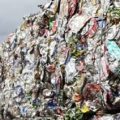In Germany, 91.4% of the tinplate for private consumption was recycled in 2020. The recycling rate of total tinplate consumption has also remained stable at around 90% since 2006. These results were published by the Gesellschaft für Verpackungsmarktforschung (gvm) in its recently released annual packaging recycling report.
“Tinplate proves once again that it is a sustainable packaging material in a closed material loop and that it works well. It can be recycled again and again without losing its inherent properties,” says Dr. Peter Biele, managing director of thyssenkrupp Rasselstein GmbH. “A tin can, screw cap or crown cork can be recycled after use and turned into a new high-quality steel product as part of a wind turbine, automobile component or bicycle part.”
Nearly 100% of tinplate can be recycled with high quality
Tinplate has a compelling advantage over many other packaging materials: it is almost 100 percent recyclable. The characteristic properties of this metal make it possible to melt it again and again and process it with the pig iron from the blast furnace to produce crude steel and convert it into a new steel product.
“For this to be possible, the tinplate must be disposed of properly – here the ball is in the consumer’s court. Empty tinplate containers must be deposited in the yellow bag or in the yellow waste garbage can. This is the only way to ensure that the steel containers also return to the material cycle,” says Biele.
thyssenkrupp Rasselstein GmbH itself is contributing to effectively closing the material cycle by ensuring the recycling of packaging steel in Germany through its own recycling systems: DWR – Deutsche Gesellschaft für Weißblechrecycling mbH for the private sector and Kreislaufsystem Blechverpackungen Stahl GmbH for the commercial/industrial sector.
The year 2020 was generally a special year, marked by the onset of the COVID-19 pandemic. For example, according to the gvm report, food can consumption increased by 9% due to COVID-19 because households made more reservations. Consumption of chemical-technical packaging even increased by 16%, as the do-it-yourself market flourished during the same period.
As of the 2020 reporting period, the calculation of the recycling rate has been modified by gvm in accordance with European Implementing Decision 2019/665.














